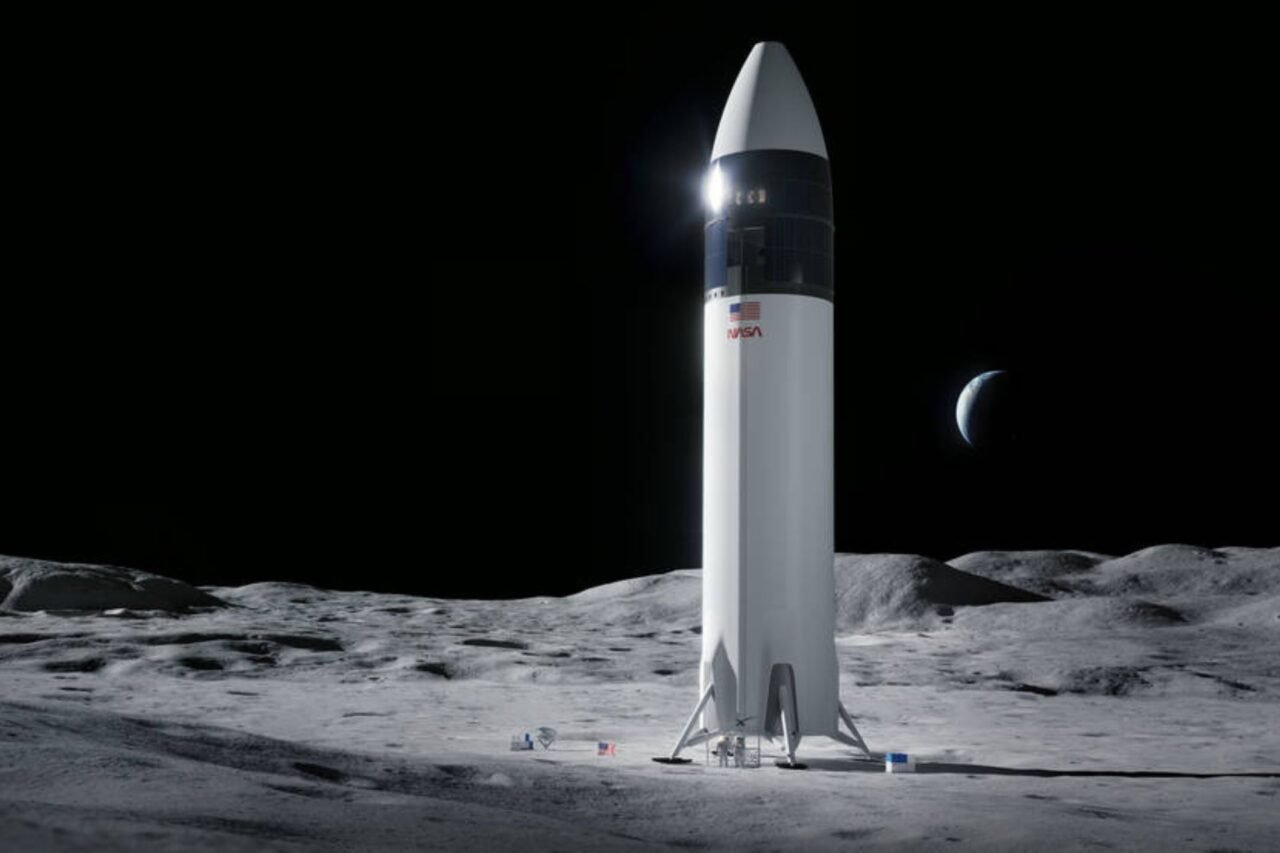Science
SpaceX Delays Lunar Lander Development, NASA Considers Alternatives

SpaceX has announced significant delays in the development of its crewed lunar lander for NASA’s Artemis 3 mission, prompting the agency to explore alternative options. A recently leaked internal document suggests that the revised timeline for the Starship Human Landing System (HLS) now aims for a lunar landing by September 2028, which is over a year later than NASA’s original mid-2027 target.
The delays in the HLS project raise concerns about SpaceX’s ability to meet critical milestones. Internal sources indicate that the company is under pressure to revise its strategy amid increasing competition from other spaceflight providers. An anonymous congressional aide described the new timeline as “very aggressive,” given the current state of the rocket’s development.
Revised Timeline and Key Milestones
NASA selected SpaceX in 2021 to provide the first crewed lunar lander for the Artemis program. The Starship HLS, a modified version of SpaceX’s Starship upper stage, is designed to transport astronauts to and from the lunar surface. However, development challenges have plagued the core Starship system throughout this year, raising alarms among industry experts and officials.
In response to the delays, Acting NASA Administrator Sean Duffy reopened the Artemis 3 contract to other spaceflight companies, signaling a need for alternative solutions. The leaked document outlines SpaceX’s new schedule, which aims to incorporate updated timelines into an “integrated master schedule” to be submitted to NASA in December.
According to the leaked information, SpaceX plans to conduct an in-orbit propellant transfer by June 2026, a critical milestone for the Artemis 3 mission. The successful completion of this transfer is essential, as Starship will require refueling in space to reach the Moon. Following that, the company intends to demonstrate an uncrewed lunar landing with the HLS in June 2027, around the same timeframe that NASA had originally planned to launch Artemis 3.
Increased Competition for Artemis 3
While SpaceX aims for a September 2028 lunar landing, the path forward is fraught with uncertainty. The Starship has yet to complete a fully successful orbital flight, a prerequisite for the upcoming propellant transfer. Additionally, the company is preparing to debut Starship Version 2 in early 2026, which will serve as the basis for the HLS. The transition to this new version may present its own set of challenges.
NASA’s response to SpaceX’s revised timeline remains to be seen. The agency is evaluating plans from both SpaceX and its competitor, Blue Origin, which is developing its own crewed lunar lander named Blue Moon Mark 2 (MK2). NASA has already contracted MK2 for Artemis 5, but Blue Origin aims to demonstrate an uncrewed version of the lander by January 2026.
With the recent successful second test flight of Blue Origin’s New Glenn rocket, the company is positioning itself as a strong contender for the Artemis 3 contract. As SpaceX continues to face development delays, Blue Origin’s progress poses a growing threat to SpaceX’s bid for the contract.
As the situation unfolds, both SpaceX and NASA will need to navigate the complexities of lunar exploration while ensuring that the Artemis program stays on track. The stakes are high, not just for the companies involved, but for the future of human exploration on the Moon.
-

 Science4 weeks ago
Science4 weeks agoInventor Achieves Breakthrough with 2 Billion FPS Laser Video
-

 Health1 month ago
Health1 month agoCommunity Unites for 7th Annual Into the Light Walk for Mental Health
-

 Top Stories1 month ago
Top Stories1 month agoCharlie Sheen’s New Romance: ‘Glowing’ with Younger Partner
-

 Entertainment1 month ago
Entertainment1 month agoDua Lipa Aces GCSE Spanish, Sparks Super Bowl Buzz with Fans
-

 Entertainment1 month ago
Entertainment1 month agoMother Fights to Reunite with Children After Kidnapping in New Drama
-

 Business1 month ago
Business1 month agoTyler Technologies Set to Reveal Q3 Earnings on October 22
-

 World1 month ago
World1 month agoR&B Icon D’Angelo Dies at 51, Leaving Lasting Legacy
-

 Health1 month ago
Health1 month agoCurium Group, PeptiDream, and PDRadiopharma Launch Key Cancer Trial
-

 Entertainment1 month ago
Entertainment1 month agoRed Sox’s Bregman to Become Free Agent; Tigers Commit to Skubal
-

 Health1 month ago
Health1 month agoNorth Carolina’s Biotech Boom: Billions in New Investments
-

 Science1 month ago
Science1 month agoNorth Carolina’s Biotech Boom: Billions Invested in Manufacturing
-

 Top Stories1 month ago
Top Stories1 month agoFormer Mozilla CMO Launches AI-Driven Cannabis Cocktail Brand Fast









